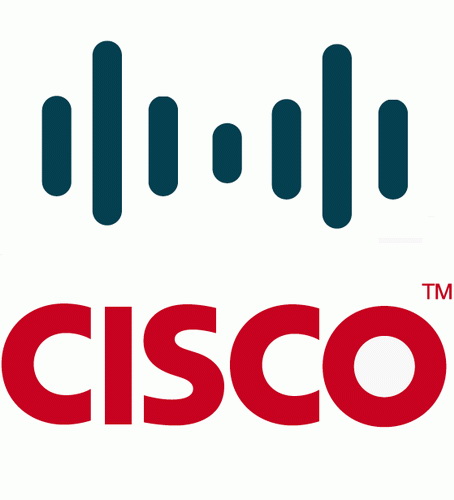目前CCNP为笔试,一个必考核心科目和一个多选一选考科目。
核心科目为 350-401 ENCOR: Implementing Cisco Enterprise Network Core Technologies 同时也是CCIE的笔试内容。
选考科目有:
- 300-410 ENARSI (Implementing Cisco Enterprise Advanced Routing and Services):这门考试主要聚焦于企业级高级路由技术和服务的实现,涉及路由协议、策略、网络服务等。
- 300-415 ENSDWI (Implementing Cisco SD-WAN Solutions):专注于Cisco SD-WAN解决方案的实现,包括部署、配置、管理和监控。
- 300-420 ENSLD (Designing Cisco Enterprise Networks):涉及Cisco企业网络的设计,包括高级地址分配、路由策略和网络服务设计。
- 300-425 ENWLSD (Designing Cisco Enterprise Wireless Networks):专门针对企业无线网络设计,包括无线网络架构、设计策略和实现。
- 300-430 ENWLSI (Implementing Cisco Enterprise Wireless Networks):关注于企业无线网络的实现,涵盖配置、监控和故障排除。
- 300-435 ENAUTO (Automating Cisco Enterprise Solutions):这门课程专注于使用自动化技术和编程语言来管理和配置Cisco企业解决方案。
- 300-440 ENCC (Designing and Implementing Cloud Connectivity):涉及云连接的设计与实现,包括云服务的集成和网络优化。
- 300-445 ENNA (Designing and Implementing Enterprise Network Assurance):专注于企业网络保障的设计和实施,包括网络监控、分析和优化,是新科目,2024年5月20日上线。
后面将介绍下ENCOR 350-401: Implementing Cisco Enterprise Network Core Technologies 和 ENARSI 300-410: Implementing Cisco Enterprise Advanced Routing and Services
ENCOR 350-401: Implementing Cisco Enterprise Network Core Technologies
Architecture(15%)
- Explain the different design principles used in an enterprise network
- High-level enterprise network design such as 2-tier, 3-tier, fabric, and cloud
- High availability techniques such as redundancy, FHRP, and SSO
- Describe wireless network design principles
- Wireless deployment models (centralized, distributed, controller-less, controller-based, cloud, remote branch)
- Location services in a WLAN design
- Client density
- Explain the working principles of the Cisco SD-WAN solution
- SD-WAN control and data planes elements
- Benefits and limitations of SD-WAN solutions
- Explain the working principles of the Cisco SD-Access solution
- SD-Access control and data planes elements
- Traditional campus interoperating with SD-Access
- Interpret wired and wireless QoS configurations
- QoS components
- QoS policy
- Describe hardware and software switching mechanisms such as CEF, CAM, TCAM, FIB, RIB, and adjacency tables
Virtualization(10%)
- Describe device virtualization technologies
- Hypervisor type 1 and 2
- Virtual machine
- Virtual switching
- Configure and verify data path virtualization technologies
- VRF
- GRE and IPsec tunneling
- Describe network virtualization concepts
- LISP
- VXLAN
Infrastructure(30%)
- Layer 2
- Troubleshoot static and dynamic 802.1q trunking protocols
- Troubleshoot static and dynamic EtherChannels
- Configure and verify common Spanning Tree Protocols (RSTP, MST) and Spanning Tree enhancements such as root guard and BPDU guard
- Layer 3
- Compare routing concepts of EIGRP and OSPF (advanced distance vector vs. link state, load balancing, path selection, path operations, metrics, and area types)
- Configure simple OSPFv2/v3 environments, including multiple normal areas, summarization, and filtering (neighbor adjacency, point-to-point, and broadcast network types, and passive-interface)
- Configure and verify eBGP between directly connected neighbors (best path selection algorithm and neighbor relationships)
- Describe policy-based routing
- Wireless
- Describe Layer 1 concepts, such as RF power, RSSI, SNR, interference, noise, bands, channels, and wireless client devices capabilities
- Describe AP modes and antenna types
- Describe access point discovery and join process (discovery algorithms, WLC selection process)
- Describe the main principles and use cases for Layer 2 and Layer 3 roaming
- Troubleshoot WLAN configuration and wireless client connectivity issues using GUI only
- Describe wireless segmentation with groups, profiles, and tags
- IP Services
- Interpret network time protocol configurations such as NTP and PTP
- Configure NAT/PAT
- Configure first hop redundancy protocols, such as HSRP, VRRP
- Describe multicast protocols, such as RPF check, PIM and IGMP v2/v3
Network Assurance(10%)
- Diagnose network problems using tools such as debugs, conditional debugs, traceroute, ping, SNMP, and syslog
- Configure and verify Flexible NetFlow
- Configure SPAN/RSPAN/ERSPAN
- Configure and verify IPSLA
- Describe Cisco DNA Center workflows to apply network configuration, monitoring, and management
- Configure and verify NETCONF and RESTCONF
Security(20%)
- Configure and verify device access control
- Lines and local user authentication
- Authentication and authorization using AAA
- Configure and verify infrastructure security features
- ACLs
- CoPP
- Describe REST API security
- Configure and verify wireless security features
- 802.1X
- WebAuth
- PSK
- EAPOL (4-way handshake)
- Describe the components of network security design
- Threat defense
- Endpoint security
- Next-generation firewall
- TrustSec and MACsec
- Network access control with 802.1X, MAB, and WebAuth
Automation(15%)
- Interpret basic Python components and scripts
- Construct valid JSON-encoded files
- Describe the high-level principles and benefits of a data modeling language, such as YANG
- Describe APIs for Cisco DNA Center and vManage
- Interpret REST API response codes and results in payload using Cisco DNA Center and RESTCONF
- Construct an EEM applet to automate configuration, troubleshooting, or data collection
- Compare agent vs. agentless orchestration tools, such as Chef, Puppet, Ansible, and SaltStack
ENARSI 300-410: Implementing Cisco Enterprise Advanced Routing and Services
Layer 3 Technologies (35%)
- Troubleshoot administrative distance (all routing protocols)
- Troubleshoot route map for any routing protocol (attributes, tagging, filtering)
- Troubleshoot loop prevention mechanisms (filtering, tagging, split horizon, route poisoning)
- Troubleshoot redistribution between any routing protocols or routing sources
- Troubleshoot manual and auto-summarization with any routing protocol
- Configure and verify policy-based routing
- Configure and verify VRF-Lite
- Describe Bidirectional Forwarding Detection
- Troubleshoot EIGRP (classic and named mode; VRF and global)
- Address families (IPv4, IPv6)
- Neighbor relationship and authentication
- Loop-free path selections (RD, FD, FC, successor, feasible successor, stuck in active)
- Stubs
- Load balancing (equal and unequal cost)
- Metrics
- Troubleshoot OSPF (v2/v3)
Address families (IPv4, IPv6)
Neighbor relationship and authentication
Network types, area types, and router types
- Point-to-point, multipoint, broadcast, nonbroadcast
- Area type: backbone, normal, transit, stub, NSSA, totally stub
- Internal router, backbone router, ABR, ASBR
- Virtual link
Path preference
- Troubleshoot BGP (Internal and External, unicast, and VRF-Lite)
- Address families (IPv4, IPv6)
- Neighbor relationship and authentication (next-hop, mulithop, 4-byte AS, private AS, route refresh, synchronization, operation, peer group, states and timers)
- Path preference (attributes and best-path)
- Route reflector (excluding multiple route reflectors, confederations, dynamic peer)
- Policies (inbound/outbound filtering, path manipulation)
VPN Technologies (20%)
- Describe MPLS operations (LSR, LDP, label switching, LSP)
- Describe MPLS Layer 3 VPN
- Configure and verify DMVPN (single hub)
- GRE/mGRE
- NHRP
- IPsec
- Dynamic neighbor
- Spoke-to-spoke
Infrastructure Security (20%)
- Troubleshoot device security using IOS AAA (TACACS+, RADIUS, local database)
- Troubleshoot router security features
- IPv4 access control lists (standard, extended, time-based)
- IPv6 traffic filter
- Unicast reverse path forwarding (uRPF)
- Troubleshoot control plane policing (CoPP) (Telnet, SSH, HTTP(S), SNMP, EIGRP, OSPF, BGP)
- Describe IPv6 First Hop security features (RA guard, DHCP guard, binding table, ND inspection/snooping, source guard)
Infrastructure Services (25%)
- Troubleshoot device management
- Console and VTY
- Telnet, HTTP, HTTPS, SSH, SCP
- (T)FTP
- Troubleshoot SNMP (v2c, v3)
- Troubleshoot network problems using logging (local, syslog, debugs, conditional debugs, timestamps)
- Troubleshoot IPv4 and IPv6 DHCP (DHCP client, IOS DHCP server, DHCP relay, DHCP options)
- Troubleshoot network performance issues using IP SLA (jitter, tracking objects, delay, connectivity)
- Troubleshoot NetFlow (v5, v9, flexible NetFlow)
- Troubleshoot network problems using Cisco DNA Center assurance (connectivity, monitoring, device health, network health)
参考资料:
https://learningnetwork.cisco.com/s/ccnp-enterprise
https://learningnetwork.cisco.com/s/enarsi-exam-topics
https://learningnetwork.cisco.com/s/encor-exam-topics

